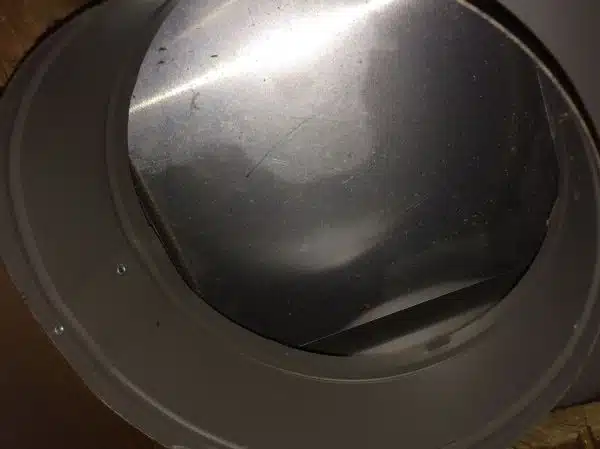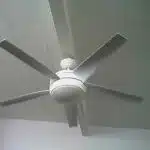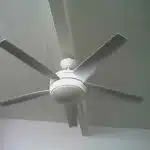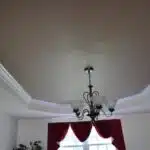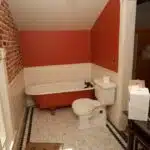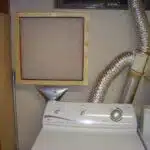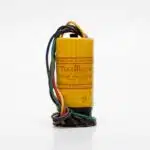Bathroom exhaust fans are essential for maintaining good indoor air quality and preventing moisture-related damage in the bathroom. Installing a bathroom exhaust fan is not only beneficial for the health of your family but also helps in keeping your bathroom fresh and odor-free. However, installing a bathroom exhaust fan can be daunting if you lack experience or knowledge in home improvement tasks. This article will provide you with step-by-step instructions on how to install a bathroom exhaust fan, ensuring that you get it right the first time.
Installing a bathroom exhaust fan requires some basic electrical and carpentry skills, but with proper guidance, it is an easy task that you can accomplish within a few hours. This guide will cover all the necessary steps involved in installing a bathroom exhaust fan, including selecting the right type of fan, determining the correct location for installation, preparing the electrical wiring and framing for installation, and mounting and connecting the new fan. Whether you are replacing an old or broken exhaust fan or installing a new one for the first time, this guide will equip you with everything you need to know to complete the task successfully. So let’s get started!
Benefits Of A Bathroom Exhaust Fan
Bathroom exhaust fans are an essential addition to any home’s bathroom as they offer a variety of benefits. The primary function of these fans is to remove humidity and moisture from the air, which can cause unpleasant odors and lead to the growth of mold and mildew. By installing a bathroom exhaust fan, you can prevent these issues, ensuring that your bathroom remains fresh and clean-smelling.
Another benefit of a bathroom exhaust fan is that it helps improve indoor air quality. Bathrooms are often filled with pollutants such as chemicals from cleaning products, hair sprays, and perfumes. Without proper ventilation, these pollutants can accumulate in the air, leading to health problems for those who use the bathroom regularly. With an exhaust fan in place, however, you can quickly remove these pollutants from the environment.
When installing a bathroom exhaust fan, there are several tips you should keep in mind. For instance, it’s important to choose a fan that is appropriate for the size of your bathroom. You’ll also need to ensure that it’s installed correctly to maximize its efficiency. Additionally, you may want to consider adding additional features such as built-in lighting or heaters for added convenience.
As we move forward into discussing safety precautions before installation, it’s important to note that installing a bathroom exhaust fan may seem like a simple task but requires careful attention to detail. By following these guidelines carefully and taking safety precautions seriously beforehand, you can ensure that your installation process goes smoothly and safely.
Safety Precautions Before Installation
Before starting the installation process of a bathroom exhaust fan, it is crucial to take necessary safety precautions. This will help prevent accidents and ensure that the installation is done correctly. The following are some of the safety measures you should consider before commencing any work:
- Turn off the power supply to the bathroom at the circuit breaker to avoid electrocution.
- Wear protective gear such as gloves, goggles, and a dust mask to protect yourself from dust particles and debris.
- Use a sturdy ladder while accessing your attic or roof to prevent falls that could cause serious injuries.
- Make sure that you have adequate lighting in your workspace to avoid making mistakes due to insufficient visibility.
- Keep children and pets away from your workplace to avoid any accidents.
The importance of ventilation cannot be overemphasized when it comes to bathrooms. A poorly ventilated bathroom can lead to issues such as mold growth, mildew, and bad odors. An exhaust fan is an essential tool for ensuring proper ventilation in your bathroom. However, even with an exhaust fan installed, there are common mistakes that people often make which may compromise its effectiveness.
One of these mistakes is installing an undersized exhaust fan that cannot move enough air out of the room. This can result in poor ventilation and inadequate moisture removal. Another mistake is installing an exhaust fan without ductwork or venting it into the attic instead of outdoors. This can lead to excessive moisture buildup in your attic or ceiling space.
In summary, before commencing any work on installing a bathroom exhaust fan, it is vital to observe necessary safety measures. Additionally, it’s essential not only to install an exhaust fan but also ensure that it’s appropriately sized and correctly vented for optimal performance. By avoiding common mistakes during installation, you’ll enjoy improved indoor air quality while preventing mold growth and other related problems.
Moving forward into the subsequent section about ‘types of bathroom exhaust fans,’ let’s dive deeper into the various types of bathroom exhaust fans available in the market today.
Types Of Bathroom Exhaust Fans
Ceiling fans are the most common type of bathroom exhaust fan. These are typically installed in the ceiling near the shower or tub and are designed to vent moisture out of the bathroom. Wall-mounted fans are another type of bathroom exhaust fan that can be installed in any type of wall. These fans are designed to draw in air from outside the bathroom and vent it back outside. Both types of fans should be installed in accordance with local building codes for safety and efficiency.
Ceiling Fans
When it comes to bathroom exhaust fans, ceiling fans are a popular option for those looking to improve air circulation and moisture control in their bathrooms. Ceiling fan placement is critical for optimal performance, and it should be installed directly above the shower or bathtub. This is because hot steam rises and tends to settle on the ceiling, leading to excess moisture buildup and potential mold growth. Installing a bathroom ceiling fan in the right location ensures that humidity levels are controlled effectively.
Another essential factor to consider when choosing a bathroom ceiling fan is noise level. While some homeowners prefer a quieter model, others may not mind the sound of a more powerful fan. It’s crucial to select an exhaust fan with the desired decibel rating to ensure that it doesn’t disrupt your daily routine or disturb other household members. Modern models come with varying noise levels, so it’s easy to find one that suits your preferences.
When installing a bathroom ceiling fan, it’s important to follow safety guidelines and hire a professional if necessary. If you’re skilled at DIY projects, make sure you have all the tools needed before starting the installation process. Always turn off power at the circuit breaker before wiring your new exhaust fan into place. With proper installation and maintenance, your new bathroom exhaust fan will provide years of efficient service while keeping your home dry and mold-free without disrupting your daily life with excessive noise levels.
Wall-Mounted Fans
Another popular type of bathroom exhaust fan is the wall-mounted fan. These fans provide an alternative to ceiling-mounted models and offer flexibility in terms of placement options. Wall mounting options allow for installation on any suitable wall within the bathroom, with no need to cut a hole in the ceiling or worry about attic space requirements.
When it comes to installing a wall-mounted bathroom exhaust fan, it’s important to have the necessary tools on hand. This includes a drill, screws or anchors, and appropriate electrical wiring materials if needed. Before beginning the installation process, be sure to locate the best spot for your new fan based on ventilation needs and aesthetic preferences. Once you have determined the ideal location, follow manufacturer instructions carefully to ensure proper installation.
Wall-mounted exhaust fans come in varying sizes and noise levels, so it’s essential to choose one that fits your specific needs. Consider the size of your bathroom when selecting a model as well as how much noise it produces during operation. Some models feature built-in timers or humidity sensors that automatically turn off the fan once moisture levels have been adequately reduced, providing greater energy efficiency and convenience for homeowners. Overall, wall-mounted bathroom exhaust fans offer an excellent option for those looking for an easy-to-install solution with flexible placement options and efficient ventilation capabilities.
Choosing The Right Fan For Your Bathroom
As you begin the journey of installing a bathroom exhaust fan, it is crucial to choose the right fan for your specific needs. Not all fans are made equal, and selecting the wrong one can lead to poor performance and even water damage. Before making your purchase, consider the size of your bathroom and its ventilation requirements.
Fan size is an essential factor in choosing the right bathroom exhaust fan. The size of your bathroom will determine how much air needs to be moved to achieve proper ventilation. A smaller room may only require a 50 CFM (cubic feet per minute) fan, while a larger space may require a 110 CFM or higher. Selecting a fan that is too small for your space will not properly ventilate moisture, leading to mold growth and potential structural damage.
In addition to fan size, ventilation requirements should also be taken into account when selecting an exhaust fan. Bathrooms with high humidity levels or lacking adequate natural ventilation may require a more robust exhaust system. This could include installing multiple fans or choosing a model with higher airflow capacity. By taking these factors into consideration, you can select the perfect bathroom exhaust fan for your home’s unique needs. In the next section, we will discuss how to measure the correct fan size and airflow capacity needed for optimal performance.
Measuring The Fan Size And Airflow Capacity
After choosing the right fan for your bathroom, you need to measure its size and airflow capacity. The fan size is crucial because it determines how much air it can move in a minute. The airflow capacity is measured in cubic feet per minute (CFM). For instance, if your bathroom has a volume of 100 cubic feet, you need a fan with an airflow capacity of at least 50 CFM.
Fan placement is another important consideration when installing your bathroom exhaust fan. Ideally, you should place the fan as close to the shower or bathtub as possible to remove moisture quickly. Additionally, the fan should be installed away from vents and windows to prevent outdoor air from entering the bathroom through the open ductwork. You also need to ensure that there is enough space around the fan for proper ventilation.
Ductwork design is vital in ensuring that your bathroom exhaust fan works correctly. It would help if you had smooth and straight ductwork with minimal bends or turns to allow air to flow out of the bathroom efficiently. The ductwork should also be as short as possible to reduce resistance and noise levels. A longer ductwork may require a more powerful fan or additional vents to increase its efficiency.
Determining the ideal location for installation is crucial when installing your bathroom exhaust fan. You need to consider factors such as proximity to shower or bathtub, distance from vents and windows, available space around the fan, among others. Remember that proper installation ensures excellent performance and longevity of your exhaust fan while keeping your bathroom free from mold and mildew growth caused by excess moisture.
Determining The Ideal Location For Installation
The first step to installing a bathroom exhaust fan is to determine the ideal location for installation. This is crucial as it will greatly affect the efficiency of your exhaust fan. The ideal location should be near the shower or bath area, to effectively remove moisture and odors from the bathroom.
When choosing a location, ensure that there are no obstructions such as pipes or electrical wiring. Additionally, make sure that there is enough space in the ceiling or wall cavity to accommodate the size of your chosen fan. Common mistakes when choosing a location include placing it too close to light fixtures, which can cause interference, and placing it too far away from moisture sources, which reduces its effectiveness.
To determine the ideal location for your bathroom exhaust fan, you will need some tools required for this task. These include a measuring tape, stud finder, drywall saw, drill with hole saw attachment (if necessary), and a screwdriver. Having these tools on hand will help you accurately measure and cut the opening for your fan while also ensuring that everything is level and secure.
- Measure the height and width of your chosen fan.
- Use a stud finder to locate any studs or obstacles in your desired installation area.
- Mark out where you want to install your fan using a pencil.
- Cut out the marked area using a drywall saw.
- Install support brackets if needed by screwing them into studs or joists. By following these steps and having the necessary tools on hand, you can ensure that you choose an optimal location for your bathroom exhaust fan. In turn, this will help maximize its efficiency in removing moisture and odors from your bathroom.
Transition: Now that you’ve determined an appropriate location for installation let’s move onto preparing the electrical wiring for installation.
Preparing The Electrical Wiring For Installation
How can we ensure that the electrical wiring is ready for the installation of a bathroom exhaust fan? Well, the first step is to turn off power to the bathroom by switching off the circuit breaker at your home’s main electrical panel. Next, you will need to determine if there is an existing switch or outlet in your bathroom that you can use to connect the new fan. If not, you may need to run a new line from your home’s electrical panel.
For electrical wiring preparation, you will need some tools such as a voltage tester, wire strippers, wire nuts, electric tape and a drill. Before starting any work on the wiring, make sure that all tools are within reach and always follow safety precautions when dealing with electricity. Once everything is prepared and set up correctly, it’s time to begin working on the wiring.
Preparing the electrical wiring can be a challenging task but taking necessary precautions ensures a safe procedure. Following this section’s guidelines will help ensure that everything is ready before installing the new fan. The next section will cover cutting through either ceiling or wall for installing the exhaust fan.
Cutting The Ceiling Or Wall For Installation
When it comes to installing a bathroom exhaust fan, one of the most important decisions you’ll need to make is whether you want to install it on the ceiling or wall. While both options have their advantages and disadvantages, it ultimately depends on your personal preferences and the layout of your bathroom.
Ceiling installation is a popular choice for many homeowners because it allows for efficient air circulation throughout the entire room. Additionally, if you have an attic space above your bathroom, it can be easier to route the ductwork through this area. However, installing a ceiling fan may require cutting into drywall or plaster, which can be intimidating for some DIYers.
On the other hand, wall installation is often preferred in bathrooms where there isn’t enough space in the ceiling or attic for proper ventilation. This option typically requires cutting into exterior walls and routing ductwork through them. While this method may be more challenging than ceiling installation, it does offer more flexibility in terms of placement.
It’s important to note that while DIY installation is possible for both ceiling and wall installations, professional installation may be necessary in some cases. For example, if you’re unsure about cutting into your walls or ceilings, or if you’re not comfortable working with electrical wiring and ductwork, hiring a professional can ensure that your fan is installed safely and efficiently. Ultimately, weighing the pros and cons of each option will help you determine which installation method is best suited for your home’s needs. In the next section, we will discuss how to properly frame the exhaust fan box before continuing with installation.
Framing The Exhaust Fan Box
After cutting the ceiling or wall for installation, the next step is to frame the exhaust fan box. The box material should be sturdy enough to hold the weight of the fan and ductwork. It is recommended to use wood framing for this purpose. Cut a piece of wood that fits snugly between two ceiling joists or wall studs. This will form the base of the exhaust fan box.
To create a four-sided enclosure, attach vertical framing pieces to each end of the base piece using screws. Next, attach horizontal pieces to connect these vertical pieces together. Make sure that all joints are tight and secure so that the box can hold up against any vibrations from the fan’s operation.
Sealing techniques are important in preventing air leaks around the exhaust fan box. Use caulking sealant along all edges where the box meets with either ceiling or wall materials. Additionally, install foam gaskets around any openings on the fan housing where ductwork will connect later on. Proper sealing will ensure efficient ventilation while minimizing any unwanted noise from escaping through gaps in your bathroom walls or ceiling.
As you complete framing for your exhaust fan box, you can now move onto installing ductwork and vent cover which will be covered in detail in our next section. Proper planning and execution at this stage ensures that your ventilation system functions properly and effectively removes moisture from your bathroom area, providing you with a fresh and comfortable environment every time you step out of your shower or bath.
Installing The Ductwork And Vent Cover
Once you have selected the appropriate bathroom exhaust fan, it is time to install the ductwork and vent cover. The ventilation system should be designed in such a way that it adequately removes moisture and unpleasant odors from your bathroom. To achieve this, you need to ensure that the ductwork design is well-thought-out and meets all relevant building codes.
The first step is to measure the distance between the fan’s housing and the exterior wall or roof where you intend to mount the vent cover. This will help you determine how much ducting material you need for your project. Once you have purchased enough material, cut it to size using a hacksaw or tin snips, then connect it to both the fan housing and vent cover using foil tape or metal screws. Make sure that there are no kinks or bends in the ductwork as these can restrict airflow.
Lastly, install the vent cover on your exterior wall or roof. Be sure to choose an appropriate location that promotes proper ventilation while avoiding any obstacles such as overhanging branches or power lines. Then seal around its edges with caulk or weatherstripping to prevent cold air from entering your home during winter months. With all of these steps completed successfully, your bathroom exhaust fan should now be ready for use.
With your new bathroom exhaust fan installed and properly ventilated, it’s time to move on to mounting it in the box. However, before doing so, make sure that all electrical connections are secure and follow manufacturer instructions carefully for optimal performance.
Mounting The Exhaust Fan In The Box
After successfully installing the ductwork and vent cover, it’s time to move on to the next step of mounting the exhaust fan in the box. Think of this step as securing screws and sealing the box – without this, your exhaust fan won’t work effectively. But before that, let’s discuss an important point that must be considered during installation.
When choosing a bathroom exhaust fan, make sure to select one with sufficient airflow capacity for your bathroom size. A good rule of thumb is to choose a fan that can handle at least one cubic foot per minute (CFM) of air movement per square foot of bathroom area. This will ensure proper ventilation and prevent moisture buildup in your bathroom.
Now onto mounting the exhaust fan in the box. Here are some key points to keep in mind:
- Use screws provided with the exhaust fan to attach it securely to the box.
- Ensure that all seams and gaps between the box and exhaust fan are sealed using silicone caulk or foam sealant. This will help prevent air leaks.
- Make sure that you have access to the electrical wiring before sealing everything up.
Next up is attaching ductwork and choosing a vent cover – two essential steps to complete before connecting electrical wires.
Connecting The Electrical Wires
Now that you have mounted the fan, it is time to connect the electrical wires. Before doing this, make sure that the power supply is turned off. Locate the circuit breaker or fuse box and turn off the power to the room where you are installing the fan. Failure to do so can result in electrocution or damage to your home’s electrical system.
Splicing wires is a crucial step in connecting the fan’s electrical wiring. Strip about 1/2 inch of insulation from each wire with a wire stripper tool, being careful not to nick or cut any of the wires. Then, twist together wires of matching colors and sizes, such as black to black and white to white. Secure each connection with a wire nut by twisting it clockwise until tight. If there is a green or bare copper wire present, attach it to the grounding screw on both the fan and housing.
Grounding connections are important for safety reasons as they protect against electrical shock hazards. Make sure all grounding connections are tightly connected and secure before turning on power to test your bathroom exhaust fan. Once you have double-checked all connections, carefully turn on power and test your new bathroom exhaust fan for proper functioning.
With all of your electrical connections secured and properly grounded, you can rest assured that your new bathroom exhaust fan will operate safely and effectively for years to come. In order to verify proper installation, we’ll walk through testing procedures in our next section about ‘testing the fan for proper functioning’.
Testing The Fan For Proper Functioning
To ensure that your bathroom exhaust fan is working properly, you need to test it after installation. There are a few testing techniques that you can use to confirm if the fan is functioning correctly. Firstly, turn the fan on and check if the blades are spinning in the right direction. If they are not, this could be an indication that the wiring was done incorrectly during installation.
Another testing technique is to use a tissue paper or a smoke pen to detect airflow. Hold the tissue paper or smoke pen up to the grille cover of the fan while it’s running. If it’s sucking air in, then it’s installed correctly and working fine. However, if it’s blowing air outwards or there’s no airflow detected at all, then there might be an issue with the ductwork or a blockage somewhere in the system.
If you encounter any issues during testing, there are some common troubleshooting tips that you can try before calling in a professional. Check for any loose connections in the wiring and ensure that all screws and nuts are tightened securely. Clean out all debris from inside of the fan housing and make sure that there are no obstructions in the ductwork. If these tips don’t solve your problem, then it might be time to seek assistance from a qualified electrician or HVAC technician.
Now that you have tested your bathroom exhaust fan and confirmed its proper functioning, it’s time to move onto installing the fan grille cover. This step will help protect your bathroom from moisture buildup which can lead to mold growth and other related problems.
Installing The Fan Grille Cover
As we move closer to completing the installation of your bathroom exhaust fan, it’s time to address the fan grille cover. This is the final touch that not only adds aesthetic appeal but also guards the interior components of your fan from moisture and debris.
Before installing the grille, make sure to clean it thoroughly as per the cleaning instructions provided by the manufacturer. This will ensure that no dust or dirt particles are trapped inside once you attach it to your fan. Additionally, if you’re looking for a more decorative option, there are plenty of grille covers available in various styles and finishes that can match your bathroom decor.
Once you’ve selected and cleaned your desired grille cover, it’s time to install it over your fan housing. Line up the screw holes on the grille with those on the housing, insert screws through both sets of holes, and tighten them using a screwdriver until they’re secure. And there you have it – a fully operational bathroom exhaust fan with a stylish and functional grille cover!
Now that you’ve successfully installed your bathroom exhaust fan with all its components in place, let’s shift our focus towards maintaining its performance over time. In order to keep your fan running efficiently, regular maintenance is key. In the next section, we’ll go over some simple yet effective tips for keeping your bathroom exhaust fan in tip-top shape for years to come.
Maintenance Tips For Your Bathroom Exhaust Fan
Cleaning your bathroom exhaust fan is an essential part of maintaining its functionality. Dust and debris can accumulate in the fan blades, causing it to work harder and reducing its efficiency. To clean your exhaust fan, first turn off the power supply and remove the cover. Use a soft-bristled brush to clean any dust or dirt from the blades and wipe down the cover with a damp cloth. It’s recommended that you clean your exhaust fan every six months to ensure its longevity.
Troubleshooting common issues will also prevent further damage to your bathroom exhaust fan. If you notice that your fan is making excessive noise or not working efficiently, check for any obstructions in the vent or ductwork. Removing any blockages can significantly improve airflow and reduce noise levels. Additionally, inspect the motor for any signs of wear or damage such as rust or corrosion.
In conclusion, regular cleaning and troubleshooting will keep your bathroom exhaust fan functioning optimally for years to come. Following these simple maintenance tips can save you money on costly repairs while ensuring proper ventilation in your bathroom. Incorporate these techniques into your home improvement routine and enjoy a clean and efficient bathroom exhaust system!
Conclusion
A bathroom exhaust fan is an essential component of any modern bathroom. It helps to remove the unpleasant odors, moisture, and humidity that can cause damage to your walls and ceilings. However, installing a bathroom exhaust fan can be a challenging task for many homeowners. Therefore, it is crucial to follow safety precautions and choose the right fan size and airflow capacity to ensure proper functioning. The installation process involves connecting the electrical wires, testing the fan for proper functioning, and installing the grille cover.
When choosing a bathroom exhaust fan, consider the size of your bathroom and its ventilation requirements. A larger bathroom will require a fan with higher airflow capacity than a smaller one. Additionally, it is crucial to measure the fan size to ensure that it fits perfectly in your bathroom ceiling or wall.
In conclusion, installing a bathroom exhaust fan is not only beneficial but also necessary for maintaining good indoor air quality. By following safety precautions and choosing the right fan size and airflow capacity, you can enhance your bathroom’s functionality while protecting your home from harmful moisture buildup. With proper maintenance practices such as cleaning and regular inspections, your exhaust fan can provide years of reliable service. So go ahead and install one today – it’s worth every penny!
Image Credits
- “Weekend Project – Bathroom Exhaust Fan” by djuggler (featured)

